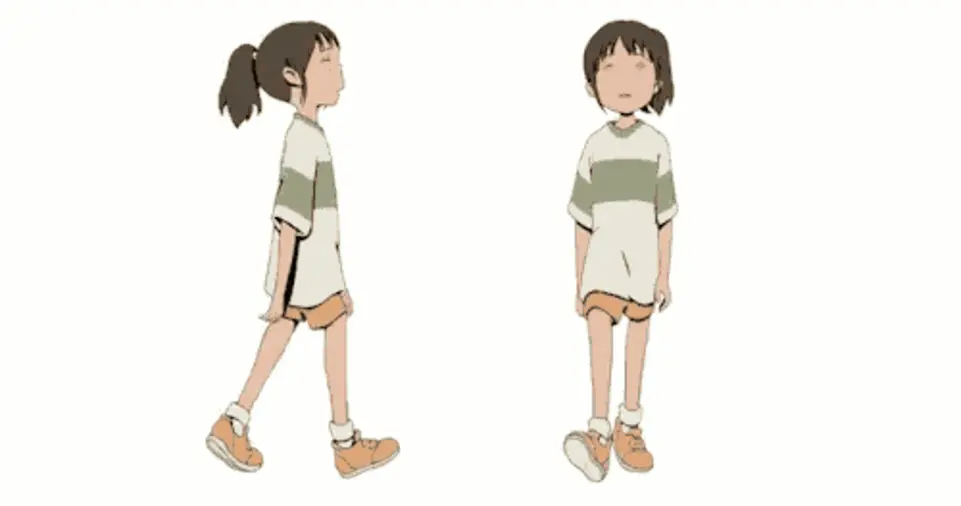Creating characters with compelling and memorable personalities doesn’t require expert-level artistic skills.
Whether you’re working on a comic, video game, animation, or a personal creative project, injecting personality into your characters can elevate your storytelling and engage your audience.
Personality is conveyed through visual design, subtle details, and intentional choices, making your characters relatable and unique.
You don’t need to be a professional artist to achieve this—all it takes is a creative approach and an understanding of how simple elements like shapes, colors, and quirks can tell a story.
This guide will provide actionable techniques to help you breathe life into your characters and ensure they leave a lasting impression.
Let’s explore how you can use unique silhouettes, expressive features, meaningful gestures, and more to develop characters that speak volumes, even without advanced artistic skills.
By the end of this guide, you’ll have practical tools and ideas to make your characters unforgettable while keeping the process fun and accessible.
Focus on Unique Silhouettes
The Importance of a Distinctive Outline
When designing a character, the silhouette is one of the first things viewers notice. A unique and easily recognizable silhouette can make your character instantly identifiable, even from a distance.
This approach works wonders because humans instinctively process shapes before details.
For example, think about iconic characters like Mickey Mouse or Batman. Their silhouettes alone communicate their identity, making them timeless and memorable.
How to Create Unique Silhouettes
Creating a distinct silhouette doesn’t require intricate drawing skills. Start by focusing on basic shapes—circles, squares, triangles, and ovals.
Experiment with combining these shapes to form different body types, head sizes, and proportions.
For instance:
- A tall, slender character might have a narrow silhouette with elongated limbs.
- A round, stout character could have a compact, bubbly silhouette.
- A character with broad shoulders and a tiny waist might convey strength and confidence.
These shape combinations naturally evoke specific traits, like elegance, friendliness, or intimidation.
Once you’ve decided on a basic silhouette, refine it by adding distinguishing features such as spiky hair, a flowing cape, or exaggerated accessories.
Practical Tip
To test the uniqueness of your silhouette, fill in the outline with black and observe if the character’s shape is still recognizable. If it isn’t, tweak the design by exaggerating certain aspects or simplifying others.
Expressive Facial Features
Why Facial Features Matter
Facial features are a window to a character’s emotions and personality.
A subtle change in the eyes, eyebrows, or mouth can transform a character from cheerful to mischievous or from serious to carefree.
These details help the audience connect with your character on an emotional level.
Designing Distinctive Faces
You don’t need to draw complex facial details to make a character expressive.
Focus on exaggeration and simplicity:
- Eyes: Large, rounded eyes often convey innocence and curiosity, while narrow, angular eyes can suggest cunning or seriousness.
- Eyebrows: Arched eyebrows can show surprise or elegance, while slanted eyebrows give a sense of determination or anger.
- Mouth: A crooked smile can hint at playfulness, while a straight-lipped frown suggests seriousness.
Experiment with these features to create a range of emotions and moods for your character. Play around with asymmetry, such as a slightly raised eyebrow or a tilted smile, to add personality and realism.
Adding Details for Depth
Adding small details like freckles, scars, or dimples can further enhance your character’s personality.
For example, a character with a scar over one eye might hint at a mysterious or adventurous past. These details give your character a sense of history and individuality.
Signature Poses and Gestures

How Body Language Defines Personality
Body language can speak louder than words when it comes to showcasing personality.
A character’s pose or habitual gestures can reveal their confidence, nervousness, or playfulness. These physical traits make your character more dynamic and relatable.
Creating Memorable Poses
Start by brainstorming how your character typically stands, moves, or reacts in different situations.
For example:
- A confident character might stand with their chest out and hands on their hips.
- A shy character could have a hunched posture with their arms crossed or hands fidgeting.
- A carefree character might lean back with their hands behind their head or sit with their feet up.
These poses communicate personality traits without the need for detailed facial expressions.
Incorporating Gestures
Give your character a signature gesture or tic to make them stand out.
This could be something as simple as flipping their hair, adjusting their glasses, or tapping their fingers.
These subtle actions help bring your character to life and make them feel more human.
Clothing and Accessories
Dressing for Personality
A character’s clothing and accessories are extensions of their personality and backstory.
These elements can immediately communicate who they are, what they value, and even where they come from. Think of clothing as a visual shortcut to reveal character traits.
Designing Outfits
When designing outfits, consider your character’s lifestyle, environment, and personality.
For instance:
- A practical adventurer might wear durable boots, cargo pants, and a utility belt.
- A glamorous socialite could be adorned in flowing fabrics, vibrant colors, and statement jewelry.
- A quirky inventor might wear mismatched patterns, goggles, and tool belts.
Don’t shy away from experimenting with textures, layers, and patterns. Even a small addition, like a scarf or a pin, can add depth to your character’s look.
Accessorizing for Impact
Accessories like hats, glasses, or unique jewelry can make a character instantly recognizable.
For example, Indiana Jones’s fedora and whip or Harry Potter’s round glasses and scar are iconic elements that enhance their personality and identity.
Use Color Psychology
The Emotional Power of Colors
Colors evoke emotions and set the tone for your character’s personality.
Choosing the right color palette can make your character feel cheerful, mysterious, or intimidating.
Even with limited artistic skills, understanding color psychology allows you to add depth to your design.
Choosing a Color Palette
When selecting colors, think about the traits you want to emphasize.
For example:
- Bright Colors: Yellow, orange, and pink convey energy, optimism, and warmth.
- Cool Colors: Blue and green suggest calmness, intelligence, or reliability.
- Dark Colors: Black, gray, and deep purple can evoke mystery, seriousness, or sophistication.
Using contrasting colors, like pairing a bold red jacket with neutral tones, can make your character stand out.
Additionally, consider cultural associations with colors if your character’s design is tied to a specific setting or tradition.
Add Imperfections
Why Flaws Make Characters Relatable
Perfection can be boring, and imperfections make characters feel more real and relatable. A chipped tooth, a tear in their clothing, or an uneven haircut can tell a story and add charm to your design.
Examples of Imperfections
Here are some ways to incorporate flaws into your character design:
- A character who’s always rushing might have wrinkled or misbuttoned clothing.
- An inventor might have smudges of grease on their face or tools sticking out of their pockets.
- A nervous character could have bitten nails or a worried expression.
These small details humanize your character and make them memorable.
ALSO READ: How to Create Simple Animations with Just a Few Drawings
Backstory-Inspired Details

Using History to Shape Design
A character’s backstory is a goldmine for design inspiration. Think about their past experiences, culture, and personality traits, and incorporate these elements into their appearance.
Examples of Backstory Details
If your character is an explorer, they might have a map tucked into their bag or a compass hanging around their neck.
If they’re a scholar, they could carry books or wear reading glasses. These details not only enhance personality but also hint at the world they live in.
Practical Tip
Write a brief backstory for your character before finalizing their design. This will guide your decisions and ensure that every element feels intentional.
Play with Proportions
Exaggeration for Impact
Playing with proportions can make your characters visually interesting and instantly memorable.
This technique works particularly well for cartoonish or stylized designs, but even subtle exaggerations can make a difference.
How to Adjust Proportions
- Oversized heads and tiny bodies can emphasize cuteness or innocence.
- Long, spindly limbs can suggest elegance or awkwardness.
- Exaggerated muscles can highlight strength and power.
Experiment with these proportions to find a balance that aligns with your character’s personality.
Give Them a Quirk
The Power of Unique Traits
Quirks make characters stand out and feel unique. A quirk could be a personality trait, a habit, or a physical characteristic that sets them apart from others.
Examples of Quirks
- A character who collects odd trinkets or treasures.
- Someone who always carries an umbrella, regardless of the weather.
- A character who hums a specific tune when they’re nervous.
These quirks add charm and make your character more relatable and interesting.
Show Emotion Through Body Language
Making Emotions Visible
Body language is a powerful tool for expressing emotions and personality. Even simple gestures can reveal what a character is feeling or thinking, adding depth to their design.
Examples of Emotional Body Language
- A character who slouches might appear tired or unmotivated.
- Someone who bounces on their toes could seem energetic and excited.
- A character with crossed arms and a furrowed brow might come across as defensive or serious.
By focusing on these details, you can convey complex emotions without needing advanced artistic skills.
ALSO READ: Timing in Animation: Why Every Animator Should Understand the Basics of Timing
Last Words!
Adding personality to your characters doesn’t require professional-level artistry.
By focusing on silhouettes, facial features, body language, and meaningful details, you can create characters that resonate with your audience and stand out in any medium.
Let your creativity shine and enjoy the process of bringing your characters to life.

